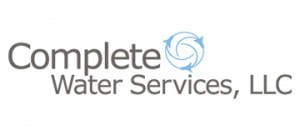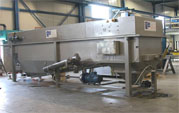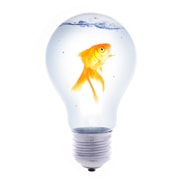Dissolved Air Flotation System
Complete Water Services provides high-quality dissolved air flotation, and other water and wastewater treatment systems for municipal, industrial, and commercial applications. We design systems that address the unique challenges of industrial wastewater systems, striving to meet your specific needs to achieve your desired water quality.
We design and install high-performance dissolved air flotation systems to effectively remove suspended solids and oils, such as fat, oils, and grease (FOG), from your waste stream through flotation.
When dissolved air bubbles adhere to the suspended solids, they can be easily skimmed off of the water surface. Most of the time, the dissolved air flotation process is assisted by adding a coagulant and/or flocculant to encourage the agglomeration of particles.
Industries That Rely on Dissolved Air Flotation
Dissolved air flotation is ideal in environments and applications where solids remain in suspension in the wastewater stream. A broad range of industries tend to create these types of waste streams, but the most common are as follows:
- Petrochemical and chemical plants
- Food and beverage production
- Paper mills and fuel gas conditioning plants
Key Features of a Dissolved Air Flotation System
Numerous industries can incorporate dissolved air flotation systems into their daily operation, especially if they need to reduce their total suspended solids and FOG. Due to its versatility, it can successfully handle waste streams in different applications.
Key features of the DAF system include:
- Efficiently reduce the chemical oxygen demand associated with suspended solids and oil
- Less sensitivity to flow variations
- Better performance in removing light particles
- Outstanding cold-water performance
- Good process flexibility
- Smaller footprint than other clarification systems for an environmental advantage
- Better water quality after wastewater treatment
- Low operation and maintenance
With its efficient design and primary features, dissolved air flotation systems are ideal for regulatory compliance and meeting other water quality goals. Complete Water Services provides our clients with innovative solutions that will deliver long-lasting benefits to their process, ultimately improving their bottom line.
Trust Complete Water Services to Deliver Effective DAF Systems
You can rely on our dissolved air flotation systems for consistent process treatment in your wastewater plant. We can aid in your equipment’s design and development process, incorporating treatment options and other features for an all-in-one solution.
If you have any questions or concerns about our services and products, feel free to contact us today. We’ll assist you in finding a system that suits your industry and solves your wastewater issues.


